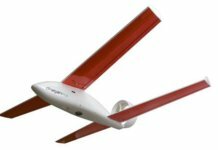What if you had the chance to film something 55 miles wide traveling just over Mach3 with your drone? As it turns out, on Aug. 21, you’ll have that very opportunity. A solar eclipse – or alignment of the sun, moon and earth – is taking place for the first time in 38 years. The last cosmic event of this magnitude happened on Feb. 26, 1979 – a time long before you could use the battery-powered supercomputer in your pocket to fly a self-stabilizing, GPS-guided aircraft with a 4k camera, using a high-bandwidth spread spectrum wireless control system. (Sheesh, drones sound so impressive when you describe them like that.)
We had one of our commercial customers ask us, “What’s involved in flying a drone during the eclipse?” and after batting the idea around the office, we’ve compiled a list of the best places to fly in states that will get a full eclipse, as well as some of the considerations involved if you’ll be flying commercially (a special thank-you to AirMap and Jonathan Rupprecht for his useful state-by-state collection of drone laws).
If you want to be the absolute first person to get footage of the shadow, the first land-based point of contact with the path of totality (the shadow of the moon on the earth) will be at Lincoln Beach, Ore., at 9:05 a.m. PT. Even the planets know that if you want to be cool before it’s cool, you start in Oregon.
Unfortunately, Lincoln Beach often suffers the same visibility problems that plague many coastal areas, particularly earlier in the day. If you don’t want to roll the dice, you’re better off moving inland where the chance for marine layer visual obscuration is much lower. If you’re flying commercially, remember that the FAA’s Part 107 requires a minimum of three miles of visibility unless you have a waiver. Also remember that Oregon requires a separate registration for unmanned aircraft systems (UAS).
Over 90 minutes, the path of totality will run through Oregon, Idaho, Wyoming, Montana, Nebraska, Iowa, Kansas, Missouri, Illinois, Kentucky, Tennessee, Georgia, and North and South Carolina. The total eclipse will end near Charleston, S.C., at 2:48 p.m. ET.
A word on safety
A solar eclipse is a beautiful event, but it comes with its own set of safety considerations. As with any mission, thorough planning is going to pay dividends in safety. Remember that in addition to the hostile environment, you might be contending with people nearby, unfamiliar surroundings and strange flight conditions. Whether you’re flying commercially or recreationally, you’ll still want to follow FAA guidelines and consider things such as “flying at night” – even when it’s high noon.
Also, no mission is worth losing your eyesight over. A solar eclipse can leave you visually impaired or blind for the rest of your life from even a brief glimpse. Make sure you and your visual observer both take the necessary precautions. (NASA has a resource on eclipse safety here.)
For detailed flight conditions and local rules for each state, we humbly present, in order of appearance, some fantastic places to fly.
Oregon
As mentioned above, Oregon has some pretty stuffy drone rules: They require any commercial aircraft to register if they’re operating in Oregon. (Here’s a link with that information.)
Coastal areas of Portland are also notorious for their poor visibility and relatively frigid summer temperatures. It’s not exactly a sure bet for making sure you get once-in-a-lifetime footage.
Many of the places defined as “the best” to watch the eclipse from are the beautiful Oregon state parks. While national parks have a clear policy on drones, Oregon state parks do not; however, it would be prudent to check in advance with park officials to make sure they allow drones. When you’re working gigs like this, it’s usually a best practice to get something in writing.
Idaho
Here’s more information on Idaho’s state drone laws. Idaho Falls and Rexburg will experience a total eclipse of 1 minute, 46 seconds and 2 minutes, 17 seconds, respectively. Unfortunately, Idaho Falls is almost all Class E airspace to the ground. However, the neighboring town of Mitchell has beautifully clear airspace and skies, which has been described by EclipseMobile.com as an “exceptionally cloud-free environment of the Columbia Basin.”
If you’re looking for somewhere you can camp, Smith’s Ferry Idaho has an entire event planned, and they lie just outside of any nearby airspace. They also have a huge open field that’s likely to compete with just about any map on any flight simulator out there for gorgeous points.
Wyoming
Wyoming has no state-specific drone laws to be weary of. (However, they’ve tried and failed four times to set up some state-specific legislation that would likely be very damaging to the commercial drone industry there.)
As for the best spots, Casper, a town of almost 60,000 people, has quite a bit of uncontrolled airspace. Guernsey, a small town in rural Wyoming, provides plenty of open spaces and airspace for you to get your shot. Their website provides contact information for you to get in touch with folks who may be able to help you find a good place to stay or stage from.
Montana
No drone laws are applied to civilians; they’re only for law enforcement. However, only a small portion of Montana is going to be within the Umbral Shadow, and unfortunately, that portion is in a very inaccessible and uninhabited part of Montana. You’re much better off making the trip to Idaho or Wyoming to see the eclipse.
Nebraska
There are no specific state laws, but there is some local legislation you’ll want to be aware of. For example, Lincoln has a “responsible operator” law on the books. If you violate it, you’re looking at a hefty $100 fine.
A very long stretch of I-80 from before North Platte to the edges of Lincoln is within the path of totality. Lincoln has a phenomenal page with lots of information about how to enjoy the eclipse there. Lincoln also proudly touts their 125 neighborhood parks or 131 miles of trails.
Iowa
If you’re looking for a good spot to watch in Iowa, your options are unfortunately very limited. Iowa is getting the smallest sliver of the eclipse in the U.S. Moreover, the only part of Iowa that’s going to be able to view the eclipse is not accessible by roads. As for the best spots nearby, St. Joseph, Mo., is 2 1/2 hours from Des Moines, Iowa. St. Joseph is the fifth-largest city in the eclipse path.
Kansas
If you are harassing/stalking someone while trying to get your eclipse footage, you stand to get in some trouble. Whether or not filming an eclipse could be considered harassment is unfortunately up to some interpretation.
In and around Hiawatha, there is plenty of Class G airspace you can fly in, and from the looks of it, a lot of enthusiastic eclipsers are looking to revel in the shadow. You can learn more about Brown County’s plans and what’s happening in Hiawatha here.
There are also plenty of spots along I-70 on either the west or east side of Kansas City that would prove ideal for a little flying and filming.
Missouri
There are no prohibitive local drone laws for people trying to capture some footage. Chesterfield will provide ample places to operate from; all along I-64 will be in the shadow.
Kirkwood has lots of Class G airspace and is far from any airports around. Kirkwood is also home to lots of beautiful parks that may serve as a great place to operate from, as long as you’re not flying over people. The Kirkwood website lists no regulations or rules about operating UAS out of their parks.
Illinois
There are no state drone laws affecting civilian or commercial operators. All of Waterloo is in Class G airspace, and they don’t have any local ordinances prohibiting the operation of UAS. Their municipal website has a lot of information on what’s going on and how you can be a part of it.
NASA has calculated that the longest point of duration for viewing the 2017 eclipse is in Illinois near the Blue Sky Vineyard. As a drone pilot, it’s hard not to like a place called Blue Sky Vineyard. As a fans of irony, it’s hard not to like watching a total solar eclipse at a place called Blue Sky Vineyard.
Kentucky
There are no state laws to note. The best spot is Paducah, a 25,000-person city situated on the banks of the Ohio River. They are welcoming visitors to their town with open arms and open airspace.
Tennessee
This state has some dubious-sounding drone laws. For example, you can take pictures or video “with the consent of the individual who owns or lawfully occupies the real property captured in the image.” So, maybe best to call ahead and make sure you’re doing the right thing.
Nashville is going to be in the path of totality and will be a good place if you can find some uncontrolled airspace. However, it seems like it’s going to be pretty busy. All these places seem like they’ll be no-fly zones, but if you call ahead and verify, you might be able to get some flights in, depending on the place.
Georgia
There are no state-specific laws, but there are some minor resolutions. The best spots will be in Clayton and Toccoa.
North Carolina
To fly commercially, you’ll need a Part 107 and a permit from the North Carolina Department of Transportation – which requires passing another knowledge test. (Here’s more information.) The best spot will be in Murphy.
South Carolina
No state-level drone laws have been passed in South Carolina, and Charleston is our pick for the best spot. The Charleston Harbor provides plenty of room to operate and resides squarely in Class G airspace (not to mention the breathtaking views of the bridge and water). In addition to being the last possible place to see the eclipse on land, Charleston has a wide variety of places to operate from and has a very conducive climate for operating drones in the summertime.
To clear skies and safe landings!
The solar eclipse promises to be a show from the ground or the air. Remember, there are going to be a lot of people trying to enjoy the eclipse who aren’t familiar with drones. An operator who is respectful is a good ambassador for our burgeoning industry.
This article was reposted with permission from Kittyhawk, a San Francisco-based provider of a drone management platform. Joshua Ziering is Kittyhawk’s chief pilot.








